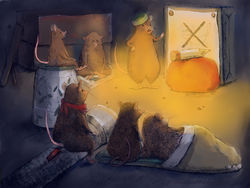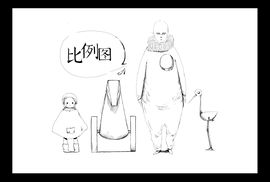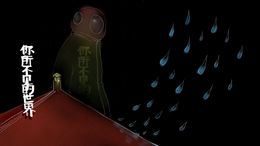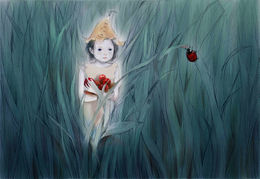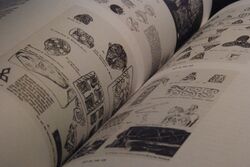User:Chen Junyu/Graduation Project Seminar/ project proposal/Proposal3: Difference between revisions
Chen Junyu (talk | contribs) No edit summary |
Chen Junyu (talk | contribs) |
||
| Line 25: | Line 25: | ||
==Relation to a larger context== | ==Relation to a larger context== | ||
Microwold's Photography by Daniel Stoupin http://www.microworldsphotography.com/ | Microwold's Photography by Daniel Stoupin http://www.microworldsphotography.com/ | ||
Revision as of 15:27, 25 November 2014
Project
The project would be an audiovisual installation. There is not specific decision of the image and sound. The sound could be recorded from inside of the plants (maybe) by contact phones, then amplify and synthesis to hearable sound. The image would base on the micro or and detailed construction of plants such as image taken by microscope, by using these images, creating 2d hand-drawing animation out of that. The work would be placed in a dark, half-closed room which provides enough silenced environment. The animation would be projected onto different spots with different scales, height and duration)in the room to build up the feeling of immersion. The path should be flexible for viewer going through, but there will also be a default path in the exhibition handbook.
Introduction
Quoted from <The Botany of Desire>: There is a natural history of the human imagination, of beauty, religion, and possibly philosophy too.
When we talk about "nature", a general feeling is "nature" is something outside. It is not ture. If we look into the explanation of nature in wikipedia, in the first paragraph, it says :" 'Nature' refers to the phenomena of the physical world, and also to life in general. It ranges in scale from the subatomic to the cosmic." As a component of the earth, human being is also a part of "Nature". The air we breath everyday, the pollen floating in the air,the small potting which generates this pollen in our bedroom, they are also components of nature. Nature is not just something " out there", it is also something "in here". But, if we trace the etymology of "nature" --the latin word "natura", or "essential qualities, innate disposition", and in ancient times, literally meant "birth", something does changed. With the highly developing science and technology, we now have the ability to change the genes of creatures, and we already have done this. The "nature" in our impression, which is the " wild" in the proper context, now is more and more difficult to survive, or, can only survive by the power of civilization -- at that time, the "wild" is also not the original "wild", it is something lokks like "the wild" and living under the proof of civilization. And the concept of "Nature", also need to be changed with this inescapable artificial power.
The relationship between human being and nature in the evolutionary history keeps changing time by time. It is hard to read from the nature itself, but we can grab something from human history. Such as the earliest existed painting in Lascaux Caves, one of the conjecture is it was drawn for expressing the respect to wild power.
And if we jump to 19 century,by the famous <Der Wanderer über dem Nebelmeer>, the content is much clearer and realistic,the wanderer is the main character in the centre of the painting, but the general commentary is still "is contradictory, suggesting at once mastery over a landscape and the insignificance of the individual within it."
Quoted from the English scripts of Earth, Sea, and Sky: Nature in Western Art: Masterpieces from The Metropolitan Museum of Art: From early times, people struggling to understand powerful natural forces imagined them as human in order to mitigate their fear of the unknown. The tradition of personifying nature continues to this day, for example in the practice of giving personal names to hurricanes.
Through advanced technique, there is no doubt that we can obeserve the function of cells which constructs our physical body, monitor every singal moment of a chemical reaction and simulate the process of a black hole having its food. On one hand the scale for measuring the world is gaining its datas, on the other hand, it doesn't bring a big difference on our perception to the world. We still live in the same model of cities or towns designed and built hundred years ago, the scale of buildings or roads didn't experience big difference in the past years. We feel save living in the artificial world, and, we are escaping from or eating out the outside nature. Maybe only when we stand alone in a wild forest without any human life's evidence, we finally can feel the original fear or the awareness of our tininess as human being did thougsand years ago.
Relation to previous practice
When I started thinking the topic of the graduation project, I traced back to my old works before I came to PZI, most of them are illustrations. Then I realised in these drawings, little people or giants, the comparison of the scale between human and other species took a large part. Surely "scale" is an effective factor in different kinds of artwork, especially in drwaings and sculptures, I still wanted to dig out what is the point attracting me so much.
Relation to a larger context
Microwold's Photography by Daniel Stoupin http://www.microworldsphotography.com/ The oldest known paintings are the Grotte Chauvet in France, the paintings show horses, rhinoceros, lions, buffalo, mammoth, abstract designs and what are possibly partial human figures. These paintings are thought as the respect for nature, or for the gain of prey
Practical steps
In order(All this practical steps are for experimenting the project sound of plants,now I am not sure if I should go further with):
- Working on prototypes for sound/visual, collect and analyse attractive installations,add--reduce.
Here are some prototypes I made.
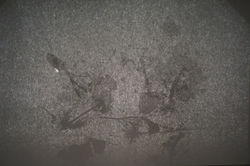
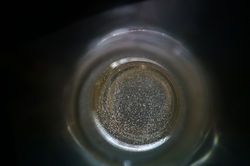
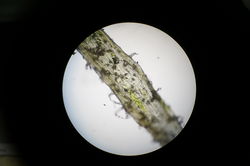
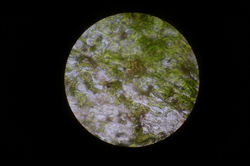
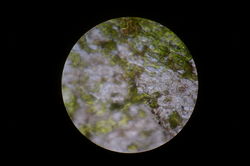
References
Oliver Grau Virtual Art -- From Illusion To Immersion
Gyorgy Kepes The Nature and Art of Motion
Max Luthi The Fairytale as Art Form and Portrait of Man'
Dolf Rieser "Art and Science"
[English Scripts]Earth, Sea, and Sky: Nature in Western Art: Masterpieces from The Metropolitan Museum of Art
Michael Pollan "The Botany of Desire"

